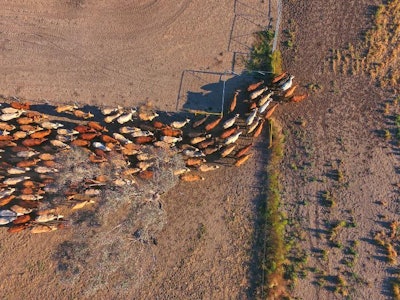
Drought is affecting livestock production in many parts of the world including Australia. Central Queensland supplier Tony Newman told ABC News that he typically imports supplements including molasses and cottonseed to his Bouldercombe facility near Rockhampton from primary producers in southern parts of Australia.
With drought increasing demand, he’s recently had to turn away business because he doesn’t have enough product to sell. His reasoning is that if he continues to take on more customers, soon he won’t be able to supply anyone at all.
“It's very hard to say no. Normally you can offer options, but this year, it's hard to even offer options,” Newman told ABC.
Cattle producer John Baker, of Middlemount, Australia, has been feeding his cattle molasses since July, the ABC report said.
This month, he went to Mackay Sugar to buy molasses directly from the supplier and wasn’t able to because the company is trying to meet the demands of its export contracts.
The sugar company said drought has impacted its production too, as it has experienced a a decline from 5.1 million tons to 4.8 million tons.
Baker has joined with other local graziers to try and import molasses back into Australia. If they’re not successful, he said, producers are going to have a big problem on their hands.
Other supplements low in Australia
Queensland and New South Wales are also experiencing a shortage of grain and cottonseed.
While other areas of Australia reported that hay was scarce in mid-August, Feed Central managing director Tim Ford said in an ABC News article that his business had only 1,000 tons for sale then, down from 220,000 tons only six months before.
Hopefully producers will see a relief as Ford predicted in August that new-season hay would be on the market in early October.
Weather impact on other areas of the world
Extreme weather conditions have caused feed shortfalls in several Canadian provinces, which has led to designated regions in British Columbia, Alberta, Saskatchewan, Manitoba, and Quebec being eligible for livestock tax deferral provision.
The government has released an initial list of these designated regions where livestock tax deferral has been authorized for 2018 due to drought or excess moisture conditions.
Drought in parts of the U.S. is making it hard for ranchers to feed their livestock, especially in states from Colorado to California and as far south as Texas.
In mid-August, one report said, cattle operations have been forced to send animals to market early because the cost to feed them is too high. Large round bales are averaging $55 in Central Texas, up about 22 percent from $45 a year ago, according to the U.S. Department of Agriculture (USDA). Texas A&M University’s AgriLife Extension Service has received reports of bales selling for up to $125 west of Austin.
Another report suggested the horses would be culled because people and even animal rescue programs didn’t have the hay nor the financial backing to buy what hay was available.

















